Famous French Revolution Paintings – Explore Revolution Art
When we think of the French Revolution, what often comes to mind are scenes of King Louis XVI and his wife Marie Antoinette meeting their deaths with the guillotine, the debauched and corrupt aristocracy, and the ascent of Napoleon Bonaparte. The French Revolution is a pivotal event in history. It brought tremendous change to the political and social structures of the country, pre-empted modern democracies by ending feudalism, and the French monarchy, and removed the Church’s political power. It also inspired future artists to paint some of the world’s most famous French Revolution paintings. Below we will discuss 10 of these paintings and why they are important.
What Was the French Revolution?
The French Revolution occurred from May 1789 to November 1799 and was a time of major societal and political change in France. It is also known as the Revolution of 1789 to separate it from later revolutions that took place in France. By the end of the 18th century, France was on the brink of economic failure after their involvement with the American Revolution as well as the King’s excessive spending habits.
That, in combination with years of drought, weak harvests, cattle disease, and the exorbitant rise in the cost of bread and heavy taxes had resulted in unrest among the peasants and poor.
Many showed their anger toward the regime by striking, plundering, and rioting. Before the revolution, there were three estates or classes in France that represented parts of society. The first estate was the clergy (leaders of the church), the second was the aristocracy, and the third represented the common people.
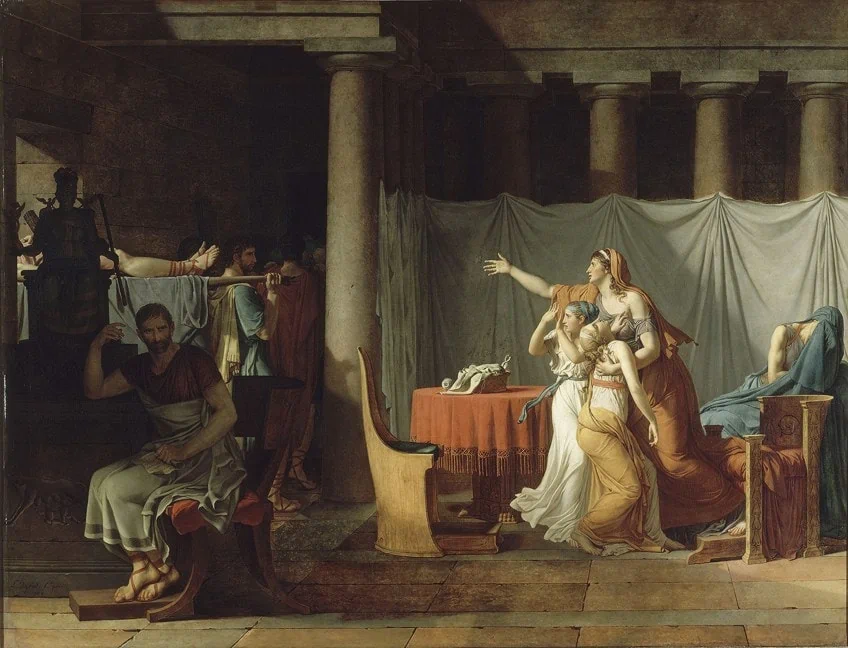
The non-aristocratic people of the third estate represented 98 percent of the population and most of the taxes were paid by them, while the nobles lived a life of extravagance. However, the other two estates could still outvote them. The third estate wanted equal representation and for the vote not to be by status but by the number of votes. The nobles, of course, did not want to give up their privileges.
At the beginning of the revolution, people representing the Third Estate founded the National Assembly and pressed the king to give them certain rights.
Soon the country was under their control and after a while, they changed their name to the Legislative Assembly and then to the National Convention. A new government called the Directory was created after the Reign of Terror and ruled until Napoleon overthrew them, founding the French Consulate, and ending the revolution in 1799. However, the reforms and ideas of the revolution relating to freedom and liberty did not die with Napoleon’s rise but had a big impact on Europe and continue to influence governments today.
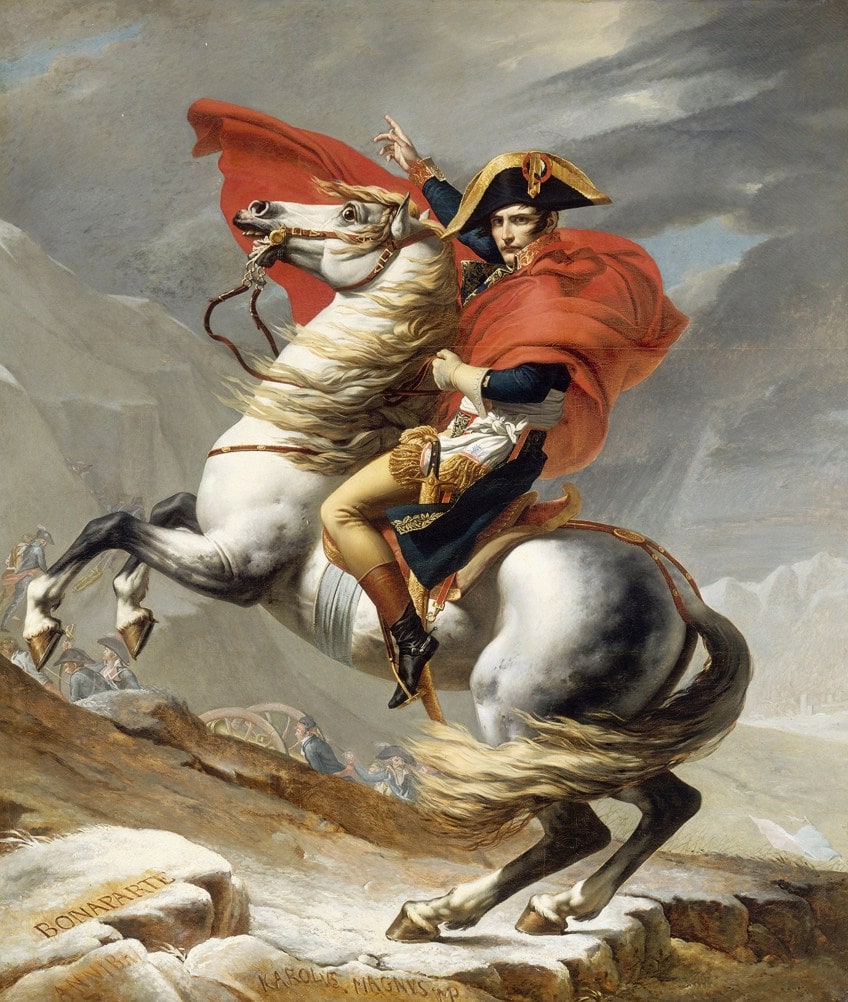
The Reign of Terror was truly a terrifying time during the French Revolution, which took place from 1793 until 1794. At this time, the Committee of Public Safety and the National Convention was led by Robespierre who sought to get rid of anyone who was against the revolution. Laws were adopted stating that anyone suspected of treason would be arrested and beheaded by the guillotine.
This resulted in thousands of people being put to death, including many of Robespierre’s adversaries, as well as King Louis XVI and his wife Marie Antoinette.
The 10 Most Famous French Revolution Paintings
Because we cannot name them all, we have listed the following 10 French Revolution art pieces that capture the emotional and turbulent period of the rebellion, each painting playing a role in the progress of French history with its own story to tell.
Marie Antoinette with the Rose (1783) by Élisabeth Vigée Le Brun
| Artist | Élisabeth Vigée Le Brun (1755 – 1842) |
| Date Painted | 1783 |
| Medium | Oil on canvas |
| Dimensions (cm) | 116.8 x 88.9 |
| Where It Is Currently Housed | Palace of Versailles |
Élisabeth Vigée Le Brun, who was also called, Madame Le Brun was a French painter. She specialized in portraiture, especially that of women in a style that is mostly considered Rococo but with elements of Neoclassicism. Le Brun was Marie Antoinette’s court painter.
The queen, often blamed for the French Revolution, attracted much hatred for living a lavish lifestyle while the people of the country were starving.

However her husband, King Louis XVI was no better and his lack of experience and string of bad decisions led to the economic crisis. Marie Antoinette with the Rose (1783) was one of two paintings of Antoinette in the same pose, holding her signature pink cabbage flower.
The other work is entitled, Marie Antoinette in a Chemise Dress (1783) depicting her in her famous white chemise dress, which was considered too simple and did not represent the royalty adequately.
Thus the work was removed from the Salon and the second version was painted. In addition, the chemise dress was made of imported cotton, which did not sit well because the queen was seen as not supporting the struggling silk industry in France. In Marie Antoinette with the Rose, Antoinette is wearing a formal blue-grey silk dress with lace trimmings, as well as pearl jewelry.
The Storming of the Bastille (1789) by Jean-Baptiste Lallemand
| Artist | Jean-Baptiste Lallemand (1716 – 1803) |
| Date Painted | 1789 |
| Medium | Oil on canvas |
| Dimensions (cm) | 80 x 104 |
| Where It Is Currently Housed | Musée Carnavalet |
Jean-Baptiste Lallemand was a French artist and draftsman who specialized in landscape painting. As a witness who survived the Revolution, the painting, The Storming of The Bastille (1789) serves as a visual record and retrospective of the turbulent period. The event depicted in this work is a major episode in the history of the French Revolution.
This is because the fall of the Bastille on July 14th, 1789 was symbolic for the people of France of the destruction of oppression and the old regime.
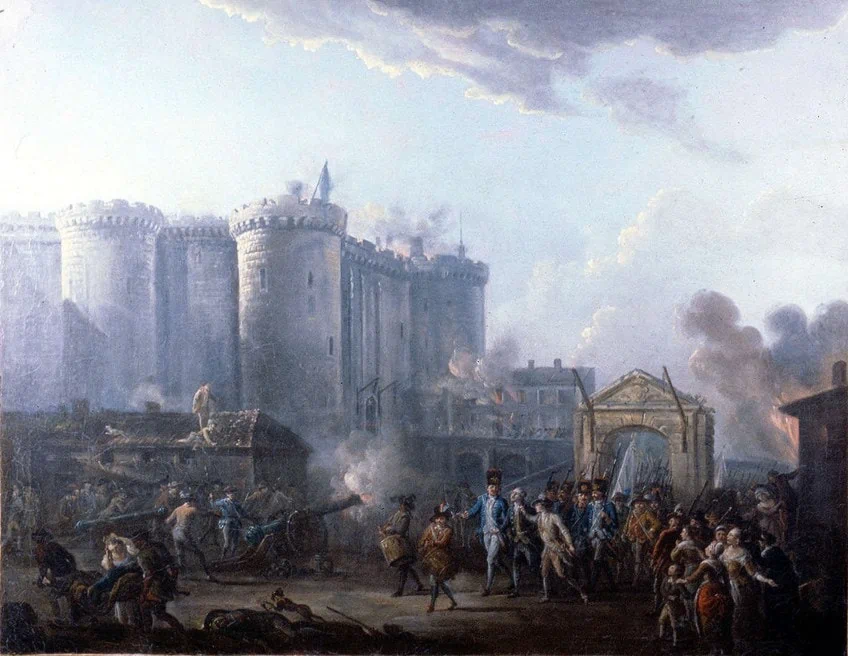
This work is unlike other revolution art in the way that it does not glorify the event, but rather captures a moment in history. Figures are depicted in the work as partaking in a battle that has become chaotic, with some injured people lying on the ground and others in a muddle of confusion and urgency engulfed in cannon fire and smoke.
The struggle endured for success is not as glamorous as depicted by other artists, such as Delacroix, and therefore can be considered closer to reality.
Declaration of the Rights of Man and of the Citizen (1789) by Jean-Jacques-François le Barbier
| Artist | Jean-Jacques-François le Barbier (1738 – 1826) |
| Date Painted | 1789 |
| Medium | Oil on panel |
| Dimensions (cm) | 71 x 56 |
| Where It Is Currently Housed | Musée Carnavalet |
Jean-Jacques-François le Barbier was a French illustrator, history painter as well as a writer. He is seen as one of the leaders of the Neoclassical movement and had painted under the Ancient Regime, becoming the official court painter for King Louis XVI, although this did not affect his career as he then painted during the French Revolution as well, indicating his pro-revolution shift.
Declaration of the Rights of Man and of the Citizen (1789) represents le Barbier’s adjustment to revolution art subject matter and is considered his most notable painting.
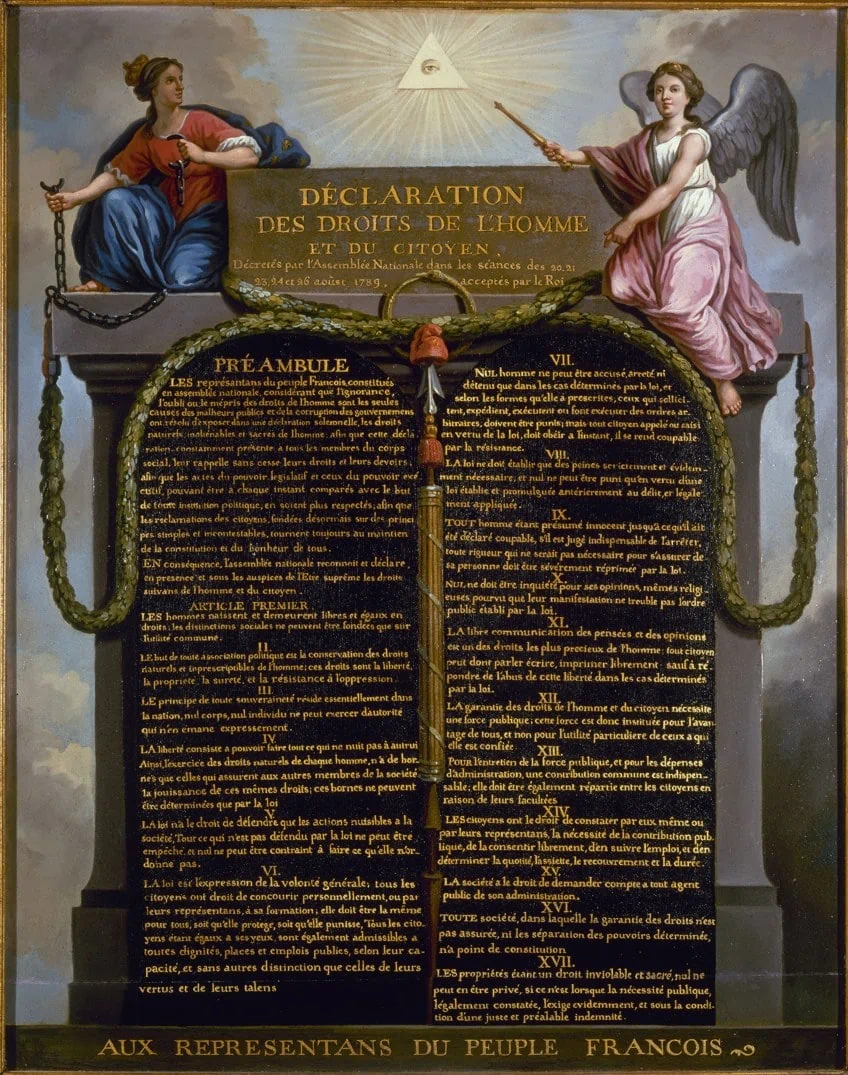
Inspired by the important revolutionary document established by the National Assembly in 1789 and entitled with the same name, the work was marketed as a poster in France and became popular among the people. In the work, kneeling on the left of the tablet is the French Revolution’s symbol, Marianne taking off her chains as she gazes toward the future, while the angel on the right blesses the Declaration and therefore, the future of France.
In the center above them hovers a shining triangle with an all-seeing eye.
The Death of Marat (1793) by Jaques-Louis David
| Artist | Jaques-Louis David (1748 – 1825) |
| Date Painted | 1793 |
| Medium | Oil on canvas |
| Dimensions (cm) | 162 x 128 |
| Where It Is Currently Housed | Royal Museums of Fine Arts of Belgium |
Jaques-Louis David was a French painter and advocate of the Neoclassical art style in the 18th century and created some of the most famous French Revolution paintings. He spent a brief amount of time painting leaders and martyrs of the French Revolution when it began, later becoming appointed by Napoleon. The Death of Marat (1793) depicts the dead Jean-Paul Marat, a French revolutionary leader, and friend of the artist.
Marat had a skin condition and often worked in his bath to relieve the symptoms. On one of these occasions, he was murdered by his political foe, Charlotte Corday in July 1793.
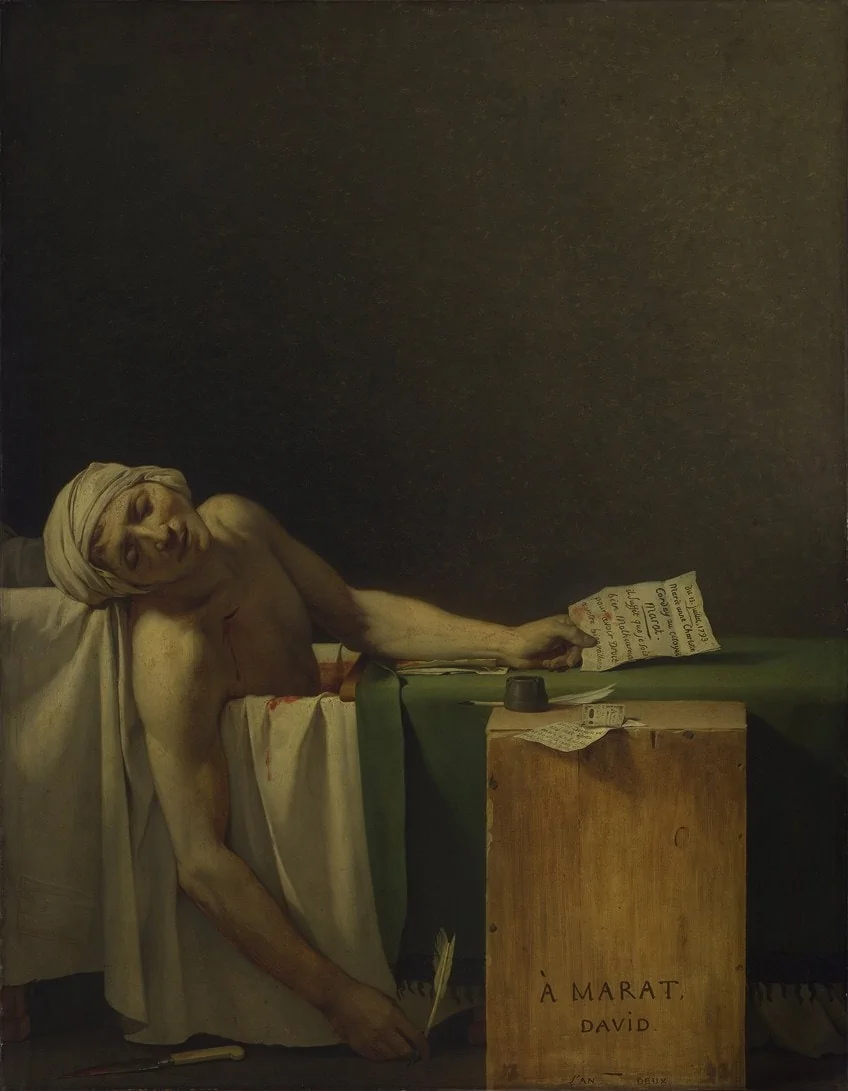
In the work, Marat lies in a covered bathtub filled with blood while he holds onto a piece of writing in his left hand and a quill in his right that reads, “Of 13 July 1793. Marie Anne Charlotte Corday to Citizen Marat. It is enough that I am very unhappy to be entitled to your benevolence” in French.
There is a stab wound in his chest and the weapon lies on the floor next to the bathtub.
Although a gruesome scene, the image holds a sense of glory with Marat’s face bathed in a soft glow, as David portrays him as one would a Christian martyr. The style can be compared to Pietà (1498 – 1499) by Michelangelo, with the figure’s arm hanging down and his head turned to the side.
Une exécution capitale, la place de la Révolution (1793) by Pierre-Antoine Demachy
| Artist | Pierre-Antoine Demachy (1723 – 1807) |
| Date Painted | 1793 |
| Medium | Oil on canvas |
| Dimensions (cm) | 37 x 53.5 |
| Where It Is Currently Housed | Musée Carnavalet |
Pierre-Antoine Demachy was a French artist who specialized in painting architecture and ancient ruins, as well as an art educator at the Louvre and the Académie. He did not paint many works of art during the revolution; however, Une exécution capitale is one of the few paintings that had a notable impact.
It is depicted at La Place de la Concorde, which was known as Place de la Revolution at the time. Some of the most significant events in revolutionary history took place in this public square in Paris.
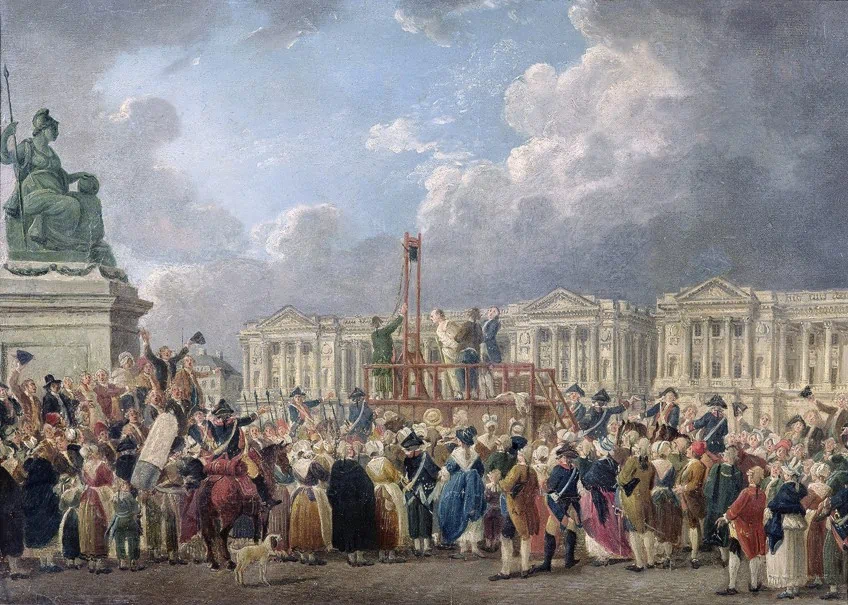
The scene in this painting may have been from the early days of the Reign of Terror, depicting the execution of a person opposed to the revolution and the surrounding triumphant crowd. Louis XVI was executed in the same square only a few months prior, and one year later Antoinette met the same fate. The built environment showcases Demachy’s talent as an architectural painter.
At the same time, it also included symbolic elements, such as Marianne’s statue, the clothing worn by the revolutionaries, and the focal point of the guillotine situated at the center of the composition.
Marie-Antoinette Being Taken to Her Execution (1794) by William Hamilton
| Artist | William Hamilton (1751 – 1801) |
| Date Painted | 1794 |
| Medium | Oil on canvas |
| Dimensions (cm) | 152 x 197 |
| Where It Is Currently Housed | Museum of the French Revolution |
William Hamilton was an English painter and illustrator and although he was not French, he offered an outsider’s perspective of the Revolution. He found the French Revolution to be fascinating and found inspiration in the fear it stirred. The execution of the extravagant queen Marie Antoinette especially stunned him, as depicted in Marie-Antoinette Being Taken to Her Execution (1794).
In the painting, the queen is being escorted by revolutionary soldiers to her death sentence.
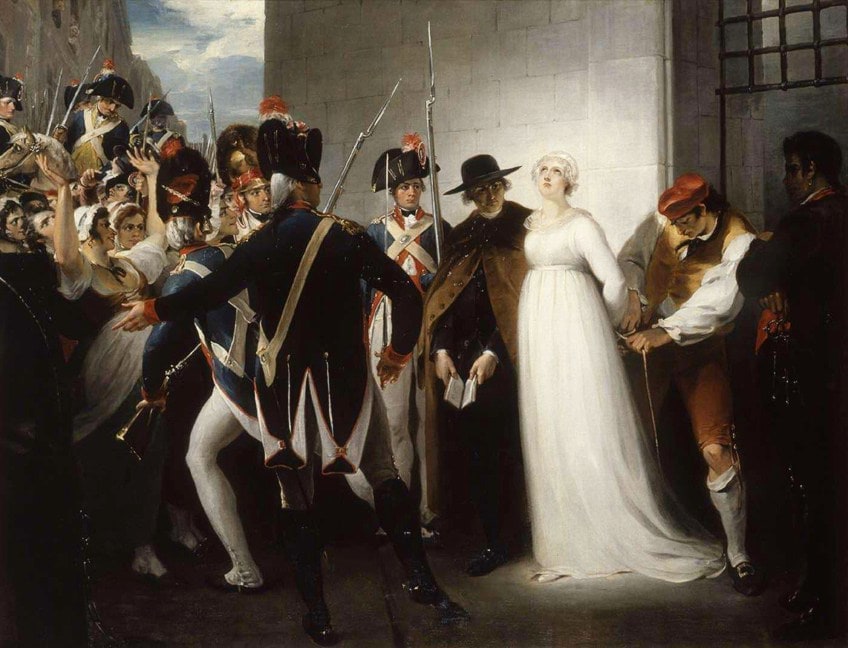
On the left of the composition, more soldiers hold back an angry crowd, who are infuriated by the decadent lifestyle that Antoinette had lived. She appears to be glowing from where she stands slightly to the right of the picture, wearing a white dress and linen cap, contrasting starkly with the dark clothing worn by those that surround her. She looks up towards the sky as if in prayer, her demeanor sad and defeated.
The painting is not too realistically rendered but holds a certain illustrative feel to it, demonstrating the powers and influences of the revolution.
Portrait of a Revolutionary (1794) by Jean-François Sablet
| Artist | Jean-François Sablet (1745 – 1819) |
| Date Painted | 1794 |
| Medium | Oil on panel |
| Dimensions (cm) | 64.5 x 54.9 |
| Where It Is Currently Housed | National Gallery of Victoria |
Jean-François Sablet was a French artist who came from an artistic family from Switzerland. He studied under Joseph-Marie Vien in Paris, the same master that Jacques-Louis David also studied under. He was a supporter of the revolution but spent its early days in Rome. The Reign of Terror worried revolutionaries in France as their movement was being portrayed as one fueled by violence and paranoia.
By 1793, the rising terror drove neighboring governments to expel Sablet, along with many other artists back to France where he used his skills in portraiture to art in revolution.
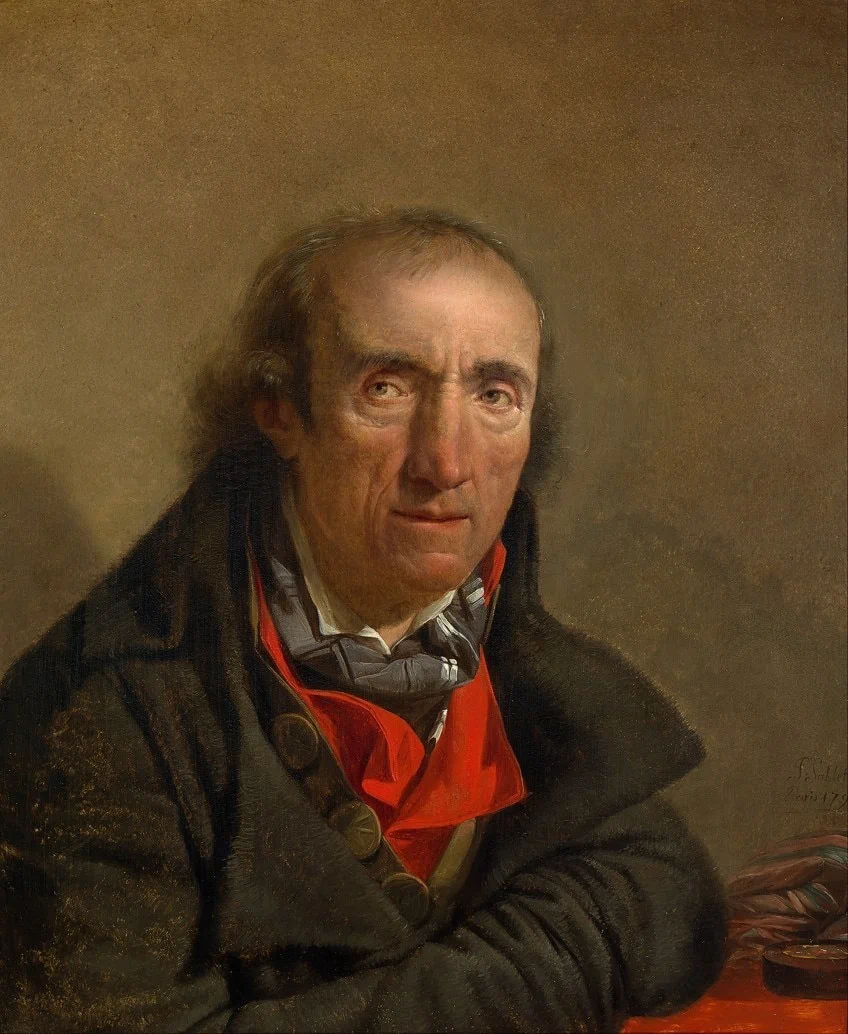
The name of the figure in the Portrait of a Revolutionary (1794) is yet unknown but the republican scarf next to him suggests that he may be an officer, and if the object on the table is a compass, he may have been part of the navy. He is wearing a rough woolen black overcoat covering a grey coat beneath that has large buttons, with a red waistcoat. Beneath that is a white shirt tied with a cravat that is striped in navy blue and white.
The revolutionary looks tired and disillusioned, painted in a style like Roman Republic portraiture; true to life, displaying his weathered and aged skin.
The Coronation of Napoleon (1805 – 1807) by Jacques-Louis David
| Artist | Jacques-Louis David (1748 – 1825) |
| Date Painted | 1805 – 1807 |
| Medium | Oil on canvas |
| Dimensions (m) | 6,21 x 9,79 |
| Where It Is Currently Housed | Louvre Museum |
Another famous painting by the French artist, Jacques-Louis David is The Coronation of Napoleon (1805 – 1807) depicting the event that took place on the second of December 1804 at Notre-Dame in Paris. Napoleon commissioned the work in 1804 and David started painting it in 1805 and completed it with the help of Georges Rouget, his apprentice in 1808. David depicts the coronation with the rules of Neoclassicism in mind, arranging the composition around various axis.
Napoleon stands off the center of the composition holding a crown that he is about to place on his wife, Joséphine’s head.

She is kneeling on a pillow in front of him, her head slightly bowed. Napoleon is wearing a coronation robe, resembling that of a Roman emperor. Pope Pius VII, who is taking part involuntarily, sits to the right of Napoleon and blesses the coronation. Napoleon’s family members are also depicted, with his brothers and sisters standing in the left foreground while his mother sits in the back center of the painting wearing a white dress. The artist is also seen attending the coronation in the background.
The 204 faces in the work look toward Napoleon and are portrayed with serious expressions, denoting the event’s importance.
Liberty Leading the People (1830) by Eugène Delacroix
| Artist | Eugène Delacroix (1798 – 1863) |
| Date Painted | 1830 |
| Medium | Oil on canvas |
| Dimensions (m) | 2,6 x 3,25 |
| Where It Is Currently Housed | Louvre Museum |
Eugène Delacroix was a French artist and a leader of the Romantic art movement. He favored painting scenes from literature and contemporary history, such as revolutions in a characteristically dramatic way. Liberty Leading the People (1830) endures as an iconic painting of French Revolution art, even though it was painted long after the revolution had finished. The French Liberty painting reflects exactly that, liberty, and the dawn of nationalism.
Although the revolution cost many lives, it was the blood spilled and the shared desire that formed a nation in Delacroix’s eyes.
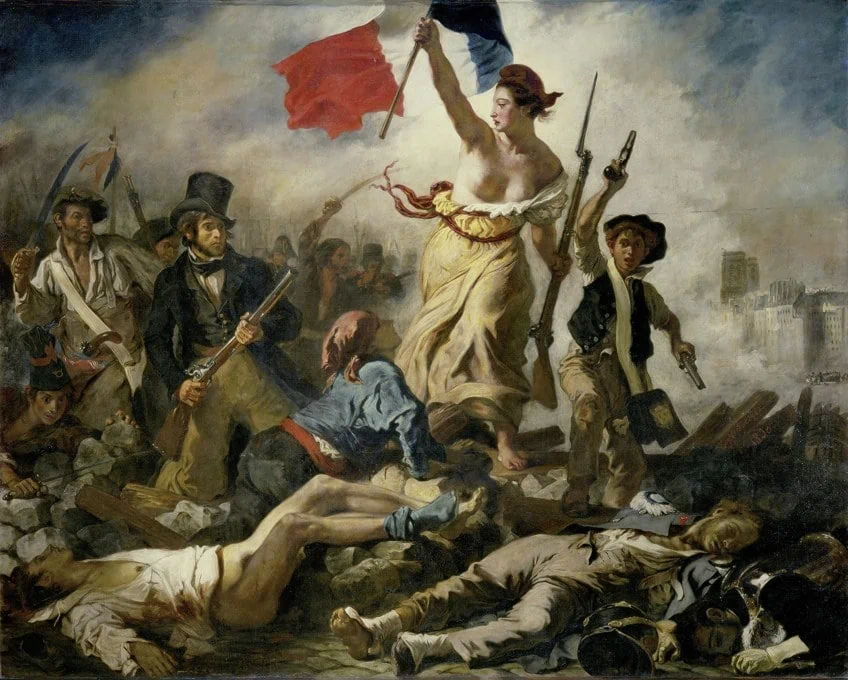
This French Liberty painting portrays the idea of a nation as a bare-chested woman standing on the barricades holding a French flag up high in her right hand. She is holding a rifle in her left hand and bodies lie at her bare feet as she looks at the men with weapons following her, encouraging them with her determination as she waves the flag with pride. The painting not only depicts the French Revolution but covers numerous turbulent years of French history in one work, highlighting the violence and sacrifice that occurred.
The work is painted in the Romantic style, with vivid color and energetic brushwork that reflects the emotion and turmoil of the theme.
Napoleon In Egypt (1867 – 1868) by Jean-Léon Gérôme
| Artist | Jean-Léon Gérôme (1824 – 1904) |
| Date Painted | 1867 – 1868 |
| Medium | Oil on panel |
| Dimensions (cm) | 36 x 25 |
| Where It Is Currently Housed | Princeton University Art Museum |
Jean-Léon Gérôme was an Academic and Orientalist painter and one of the most famous French artists of his generation. Napoleon in Egypt (1867 – 1868) is one of the numerous paintings by Gérôme depicting Napoleon Bonaparte during his campaigns. The irony was that although he had vowed to despise the monarchy, Napoleon would later become the Emperor of France. Gérôme had painted this portrait according to the preferences of his patron, the emperor’s nephew, Napoleon III who fostered the cult of his uncle.
Napoleon is depicted standing in front of the Mamluk Tombs situated outside of Cairo during his expedition in Egypt in 1798.

The work is painted in Gérôme’s meticulously detailed style, depicting Napoleon in his uniform as a general during the French Revolution. A parallel may have been intended between the would-be emperor and the men whose remains are housed in the tombs of the painting, as they were once slaves who had risen to become imperial leaders of Egypt.
In conclusion, the French Revolution had a great impact on art, and art in the revolution made an impact on the rebellion as well. The revolution was the start of independence in France and artistic independence as well. There are many great paintings exploring the theme of the French Revolution and if you have felt inspired by the 10 works above, we encourage you to continue your exploration of this significant period in history and French Revolution artwork.
Frequently Asked Questions
What Was the French Revolution?
The French Revolution was a major event in history that took place from May 1789 to November 1799 and brought about major societal and political change in France, drastically changing institutions such as the monarchy and the feudal system that had been dominant for centuries. The revolution started with the Estates General and National Assembly and ended with the rise of Napoleon and the formation of the French Consulate.
What Is the Connection Between the French Revolution and Neoclassical Painting?
The French Revolution influenced the change from the dominant Rococo painting style to newer styles such as Neoclassicism, which became popular in French Revolution artwork. Rococo had a fanciful style that focused on light-hearted wealthy subjects, while Neoclassicism focused on more noble themes and emphasized nationalism and personal sacrifice, and even worked as propaganda during the revolution. Artists such as Jacques-Louis David supported the revolutionaries through art that promoted logical, coherent thinking, and seriousness like that of ancient Rome.
Jaycene-Fay Ravenscroft is a writer, poet, and creative based in South Africa, boasting over 6 years of experience working in a contemporary art gallery. She earned her Bachelor of Arts degree with majors in Art History and Ancient History from the University of South Africa, supplementing her studies with courses in Archaeology and Anthropology. Driven by a passion for learning, Jaycene-Fay finds inspiration in symbology and the interconnectedness of the world. Trained to analyze and critique art, she is enthusiastic about delving into the meanings behind each artwork, exploring its ties to the artist’s cultural, historical, and social context. Writing serves as Jaycene-Fay’s means of researching, sharing knowledge, and creatively expressing herself. For artfilemagazine, Jaycene-Fay writes articles on art history with a focus on historical paintings.
Learn more about Jaycene-Fay Ravenscroft and about us.
Cite this Article
Jaycene Fay, Ravenscroft, “Famous French Revolution Paintings – Explore Revolution Art.” artfilemagazine – Your Online Art Source. September 9, 2022. URL: https://artfilemagazine.com/famous-french-revolution-paintings/
Ravenscroft, J. (2022, 9 September). Famous French Revolution Paintings – Explore Revolution Art. artfilemagazine – Your Online Art Source. https://artfilemagazine.com/famous-french-revolution-paintings/
Ravenscroft, Jaycene Fay. “Famous French Revolution Paintings – Explore Revolution Art.” artfilemagazine – Your Online Art Source, September 9, 2022. https://artfilemagazine.com/famous-french-revolution-paintings/.



